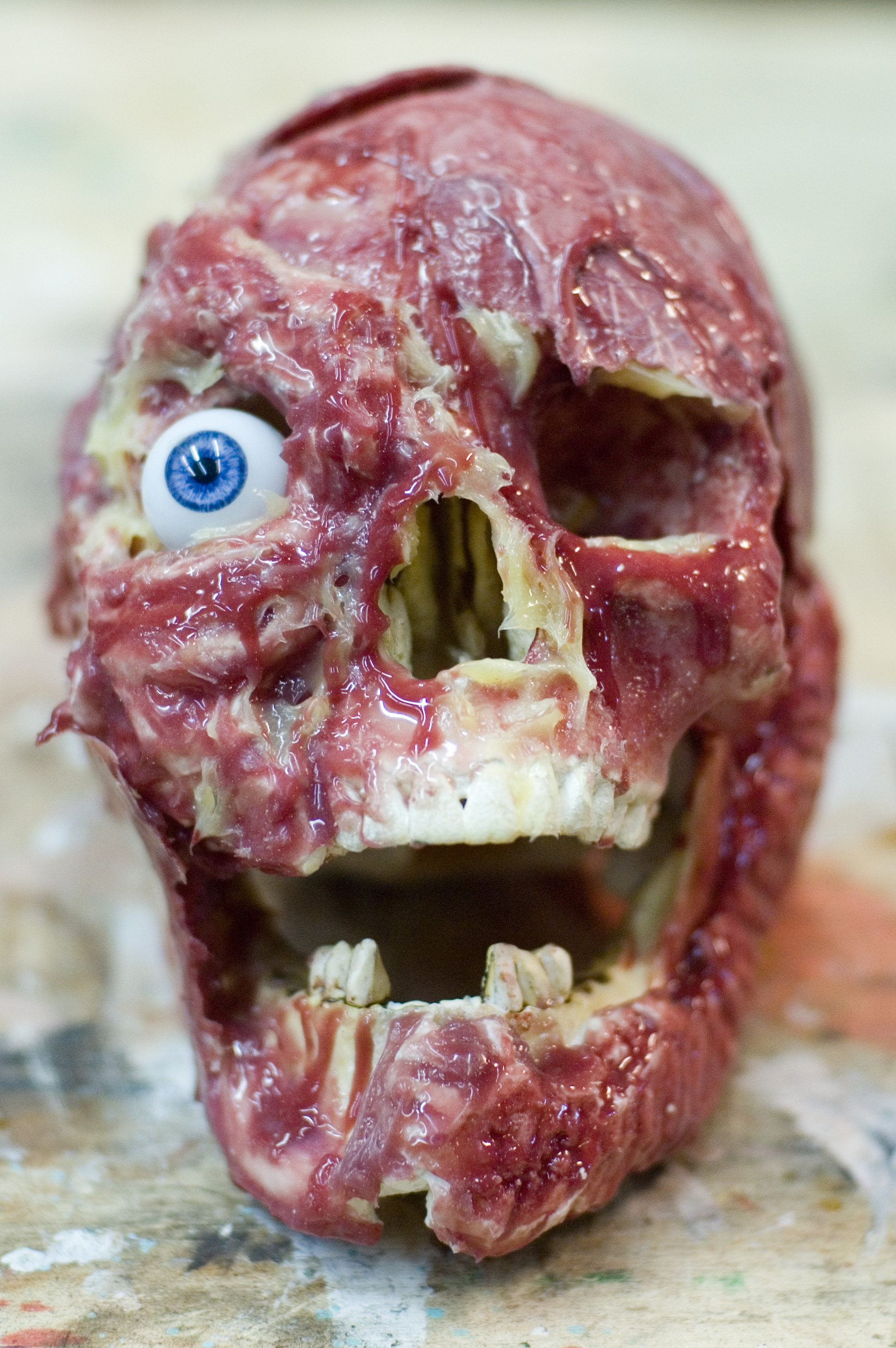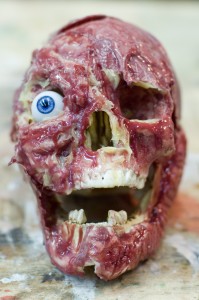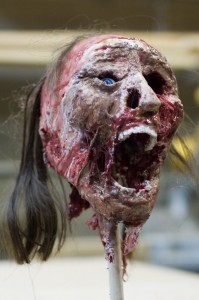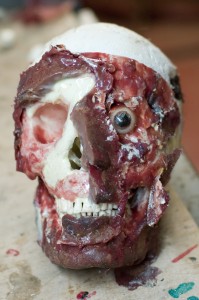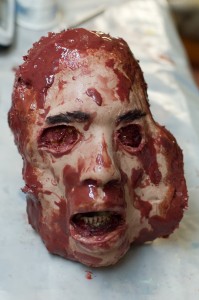My wife and I are currently working on a project for a new show which is essentially a Styrofoam sculpture. It got me thinking about the various ways to treat and coat foam.
You need to coat foam with something. If you tried to paint raw foam, it will eat all the paint up. If you tried to use anything with a solvent, such as spray paint, it will dissolve the foam. Finally, uncoated foam is just too fragile for many uses, especially in theatre.
Coating the foam with Gesso or joint compound will smooth it out and give it a paintable surface. If you mix the joint compound with glue, it will make give it a little more flexibility, as joint compound tends to crack and flake off. Though your Styrofoam will look nice with these kinds of coatings, they will still be fairly fragile.
At the display company I’ve worked at in the past, we made a lot of sculpted pieces out of foam. For the most part, we used Rosco Foamcoat on top of our pieces. Foamcoat goes on a little like joint compound, and creates a hard but flexible coating. It can be sanded and painted, but it doesn’t fall apart like joint compound. It gives a good amount of protection, though it will still dent if you hit it or drop it.
Another product we use at the display company is Aqua Resin. This takes a lot more time, but you are left with a very hard and very smooth surface.
You can use other types of resin on Styrofoam. Polyester resins will eat through the foam, but epoxy resins will give you a very hard, very smooth surface. These are normally used in conjunction with fiberglass or other composite fibers. You can use fiberglass or carbon fiber over foam to give it a lot of strength; this is how some surfboards and skateboards are made. At this point though, are you making a Styrofoam prop, or are you just using it as a form for the fiberglass?
For the project we’re currently working on, we’ve decided on the following compromise; we are going to cover the foam in muslin strips soaked in glue. After this dries, it will create a hard outer shell which can be painted. With a fibrous coating, the piece will resist cracking or crumbling. We will then coat the piece in Foamcoat to smooth it out and hide the texture of the muslin. Finally, we will cover the whole thing in epoxy resin to make it smooth, waterproof, and even stronger. I did a few tests, and this gave the best result for our timeframe and budget.
Finding out this kind of information online can be difficult, so most of what I’ve written here is based on my experience, experimentation, and some research. If anyone else out there ever sculpts in foam, I’d love to hear how you finish it off.

